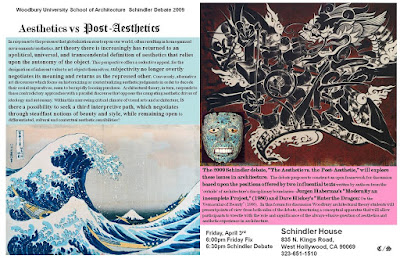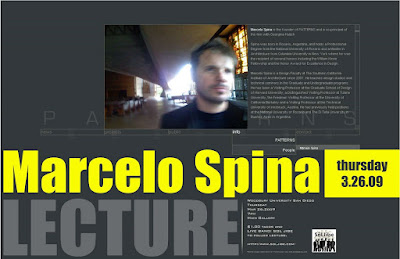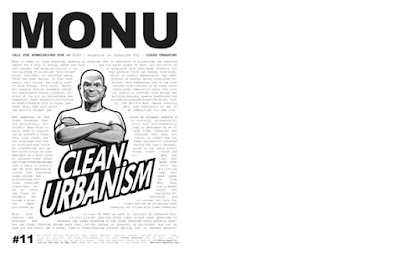estare en este evento el viernes.
Aesthetics vs Post-Aesthetics
In response to the pressure that globalization exerts upon our world, often resulting in homogenized environments/aesthetics, art theory there is increasingly has returned to an apolitical, universal, and transcendental definition of aesthetics that relies upon the autonomy of the object. This perspective offers a seductive appeal, for the designation of inherent value to art objects themselves; subjectivity no longer overtly negotiates its meaning and returns as the repressed other. Conversely, alternative art discourses which focus on historicizing or contextualizing aesthetic judgments in order to decode their social imperatives, seem to be rapidly loosing purchase. Architectural theory, in turn, responds to these contradictory approaches with a parallel discourse that opposes the competing aesthetic drives of ideology and autonomy. Within this narrowing critical climate of visual arts and architecture, is there a possibility to seek a third interpretive path, which negotiates through steadfast notions of beauty and style, while remaining open to differentiated, cultural and contextual aesthetic sensibilities?
The 2009 Schindler debate, “The Aesthetic vs. the Post-Aesthetic,” will explore these issues in architecture. The debate proposes to construct an open framework for discussion based upon the positions offered by two influential texts written by authors from the ‘outside’ of architecture’s disciplinary boundaries–Jurgen Habermas’s “Modernity an incomplete Project,” (1980) and Dave Hickey’s “Enter the Dragon: On the Vernacular of Beauty“ (1993). In this forum for discussion Woodbury architectural theory students will present points of view from both sides of the debate, structuring a conceptual apparatus that will allow participants to wrestle with the role and significance of the always-elusive question of aesthetics and aesthetic experience in architecture.\
Friday, April 3rd
6:00pm Friday Fix
6:30pm Schindler Debate
Schindler House
835 N. Kings Road,
West Hollywood, CA 90069
323-651-1510





